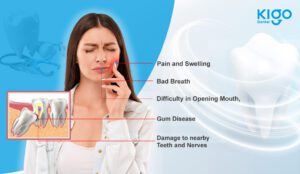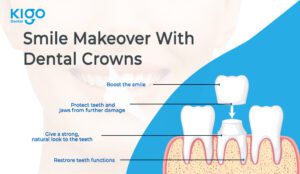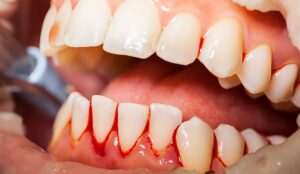Cleft Orthodontics
Uncompromised quality
We use quintessential quality materials and stringent sterilisation protocols to ensure that you don't have any medical or dental complications in future.
Anxiety Free Dentistry
Experience the treatment process in a pleasant atmosphere from handpicked expert clinicians, with unparalleled clinical etiquette, to ensure exemplary health care.
Best in class outcomes
We strive our best, so that we can keep our promise of delivering the individualized smiles that we have reimagined for you with latest techniques and technologies.
Cleft Orthodontics


At Kigo Dental, we understand the unique challenges and dental needs that individuals with cleft lip and palate may face. We are proud to offer specialized Cleft Orthodontics services, providing comprehensive and compassionate care to help patients with cleft conditions achieve optimal oral health, proper facial development, and a confident smile.
Cleft lip and palate are congenital conditions that result in a separation or incomplete fusion of the lip and/or the roof of the mouth during fetal development. These conditions can lead to various dental and orthodontic issues, including misalignment of the teeth, jaw discrepancies, speech difficulties, and aesthetic concerns. Our experienced team of dental professionals is dedicated to addressing these challenges with a multidisciplinary approach, working in collaboration with other healthcare providers to provide comprehensive care.
We understand the importance of early intervention and a personalized treatment plan for individuals with cleft conditions. Our team of orthodontic specialists will carefully assess your unique needs, taking into consideration factors such as the severity of the cleft, dental alignment, facial symmetry, and speech development. We will then develop a customized treatment plan that aims to optimize your oral health, enhance facial aesthetics, and improve speech function.
Our approach to cleft orthodontics combines advanced techniques, cutting-edge technology, and a compassionate touch. We utilize a variety of orthodontic appliances and treatments, such as palatal expanders, braces, and corrective surgeries, to address the specific needs of each patient. Throughout the treatment journey, we prioritize open communication, patient education, and a supportive environment to ensure your comfort and confidence.
Our dedicated team understands the unique emotional and physical challenges that can accompany a cleft condition. We are committed to providing not only exceptional orthodontic care but also ongoing support and guidance to you and your family. We are here to answer your questions, address your concerns, and assist you in every step of your treatment process.
At Kigo Dental, we believe that every individual deserves a healthy, beautiful smile. Our Cleft Orthodontics service aims to transform lives by improving oral function, aesthetics, and self-confidence. Schedule a consultation with our experienced team today and let us embark on this journey together, creating a brighter future and a smile that reflects your unique beauty.
Pre-surgical orthopedics: This treatment involves using an orthopedic device, such as a nasoalveolar molding (NAM) appliance, to reshape the upper jaw and nostril area before surgery.
Orthognathic surgery: This type of surgery involves repositioning the upper jaw, lower jaw, or both to correct a malocclusion (misalignment of the teeth and jaws).
Alveolar bone grafting: This procedure involves taking bone from another part of the body, such as the hip, and using it to fill in the gap in the upper jaw created by the cleft.
Orthodontic braces: This is a common treatment for correcting misaligned teeth in cleft patients. Braces are used to move teeth into the correct position and improve the overall appearance of the smile.
Retainers: After orthodontic treatment, retainers are often used to maintain the position of the teeth and prevent them from moving back to their original position.
Speech therapy: Cleft orthodontic treatment may also involve speech therapy to help patients learn how to speak more clearly and overcome any speech problems caused by the cleft.
Cleft Lip: A visible split or gap in the upper lip, which may extend to the nose. This can cause difficulties with feeding, speech, and dental development.
Cleft Palate: A split or gap in the roof of the mouth, which can extend from the front of the mouth to the back of the throat. This can cause difficulties with feeding, speech, and hearing, as well as an increased risk of ear infections.
Difficulty feeding: Infants with a cleft lip or palate may have difficulty breastfeeding or bottle-feeding due to the cleft. This can lead to poor weight gain and malnourishment if not addressed.
Speech problems: Children with a cleft may have difficulty speaking clearly due to the malformation of the palate and/or lip. This can include problems with articulation, resonance, and voice quality.
Dental problems: A cleft can cause misalignment of the teeth and problems with dental development, such as missing or extra teeth.
Ear infections: Children with a cleft palate are more prone to ear infections due to the connection between the ear and the palate. This can lead to hearing loss if left untreated.
Improved oral health: Cleft orthodontic treatment can help to address dental problems associated with clefts, such as misaligned teeth, missing teeth, and bite problems. This can improve overall oral health and reduce the risk of tooth decay and gum disease.
Improved speech: Cleft orthodontic treatment can help to improve speech by addressing problems with articulation, resonance, and voice quality.
Improved facial appearance: Cleft orthodontic treatment can help improve the face’s appearance by correcting the cleft and any associated dental or skeletal problems.
Improved self-esteem: Cleft orthodontic treatment can help to improve self-esteem and confidence by improving facial appearance, speech, and overall oral health.
Improved nutrition: Cleft orthodontic treatment can help to improve feeding and swallowing, which can improve overall nutrition and reduce the risk of malnourishment.
Reduced risk of complications: Cleft orthodontic treatment can help to reduce the risk of complications associated with cleft, such as ear infections and hearing loss.
Initial assessment: The first step is to have a thorough assessment of the cleft by a cleft team, which may include an orthodontist, plastic surgeon, speech therapist, and other specialists. The team will develop a treatment plan based on the individual’s needs.
Pre-surgical orthodontics: Before surgery, orthodontic treatment may be needed to align teeth and prepare the jaw for surgery. This may involve the use of braces or other orthodontic appliances.
Surgical repair: Surgery is usually required to repair the cleft, either in infancy or early childhood. This may involve multiple surgeries over a period of several years to address various aspects of the cleft, such as the lip, palate, and nose.
Post-surgical orthodontics: After surgery, orthodontic treatment may be needed to continue aligning teeth and adjusting the jaw. This may involve the use of braces, retainers, or other appliances.
Ongoing monitoring: Regular follow-up visits with the cleft team are important to monitor progress, adjust treatment as needed, and address any issues that arise.
- Individuals who have cleft lip and/or palate may benefit from cleft orthodontic treatment. Cleft lip and palate is a congenital condition that occurs when the tissue that forms the upper lip and/or roof of the mouth does not fuse properly during fetal development. This can result in a range of oral and facial abnormalities, including a gap in the upper lip, a split or opening in the roof of the mouth, and misaligned teeth and jaw.
- Cleft orthodontic treatment may be recommended for individuals with cleft lip and palate to address these abnormalities and improve overall oral health and function. The specific type of treatment will depend on the severity of the cleft and the individual’s specific needs. Orthodontic treatment for cleft lip and palate typically involves a combination of appliances, such as braces, palatal expanders, and orthognathic surgery.
- In general, individuals with cleft lip and palate may benefit from cleft orthodontic treatment if they have misaligned teeth or jaws, difficulty speaking, difficulty eating or swallowing, and/or issues with breathing. If you or a loved one has cleft lip and/or palate, it’s important to work closely with a cleft team, which may include an orthodontist, to develop a personalized treatment plan that meets your specific needs
Treatment for cleft lip and palate typically begins in infancy or early childhood, and cleft orthodontics may be recommended at different stages of a patient’s development. Here are some general guidelines for when cleft orthodontics may be done:
Infancy: Cleft lip and palate are typically diagnosed soon after birth, and early intervention may be recommended to ensure that the infant can feed and develop properly. An orthodontist may be involved in the treatment plan to address any dental or skeletal issues that may affect feeding.
Toddlerhood: As a child grows and develops, an orthodontist may be involved in the treatment plan to address issues such as a narrow upper jaw, misaligned teeth, or speech development issues.
Childhood: Orthodontic treatment may be recommended in childhood to improve dental and skeletal alignment and address any bite issues. Braces or other orthodontic appliances may be used to achieve these goals.
Adolescence: Surgical orthodontics may be recommended in adolescence to correct skeletal issues and improve facial symmetry. This may involve a combination of orthodontic treatment and jaw surgery.
Misaligned teeth and jaw: Cleft lip and palate can cause misalignment of the teeth and jaw, which can make it difficult to eat, speak, and breathe. Without treatment, the misalignment can become more severe, leading to greater functional difficulties.
Speech difficulties: Cleft lip and palate can affect speech, causing speech impediments or difficulty being understood. Without treatment, speech difficulties can persist or worsen.
Oral health issues: Cleft lip and palate can increase the risk of tooth decay, gum disease, and other oral health issues. Without treatment, these issues may become more severe, leading to pain, infection, and tooth loss.
Social and emotional issues: Cleft lip and palate can cause social and emotional difficulties due to appearance and functional issues. Without treatment, these issues may persist or worsen, leading to decreased self-esteem and reduced quality of life.
All of us here at Kigo Dental are committed to providing you with the best dental care available, and we do so with a smile.
Our entire staff, from receptionists to dental hygienists and assistants, is committed to providing you with the best quality dental care possible
From the time you walk through the door and every time you revisit, you will experience this firsthand.
Kigo Dental has a team of experienced and skilled Orthodontists and other specialised dentists who specialise in providing high-quality dental care and treatments, utilising the latest technologies and techniques to ensure the best outcomes for their patients.
FAQ's
Cleft orthodontic treatment is a specialized form of orthodontic treatment that is designed to address the specific needs of individuals with cleft lip and/or palate. The treatment may involve the use of appliances such as braces, palatal expanders, and orthognathic surgery.
The timing of cleft orthodontic treatment may vary depending on the individual’s specific needs. In general, treatment may begin as early as infancy, and continue into adolescence and adulthood.
Cleft orthodontic treatment can be uncomfortable, but it should not be painful. Patients may experience some soreness or discomfort after orthodontic appointments, but this can usually be managed with over-the-counter pain medication.
The duration of cleft orthodontic treatment can vary depending on the severity of the cleft and the individual’s specific needs. In general, treatment may take several months to several years to complete.
To prepare for cleft orthodontic treatment, you may need to have a comprehensive evaluation with your cleft team, which may include an orthodontist, to develop a personalized treatment plan. Your orthodontist may also provide specific pre-treatment instructions, such as improving oral hygiene or avoiding certain foods.
Like any medical procedure, cleft orthodontic treatment may carry some risks, such as infection, tooth decay, and gum disease. Your orthodontist and cleft team can provide guidance on minimizing the risks of treatment.
Yes, cleft orthodontic treatment can improve the appearance of the teeth and jaws, which may improve overall facial aesthetics. However, the specific results will depend on the individual’s specific needs and treatment plan.
Yes, after cleft orthodontic treatment, your orthodontist will likely recommend the use of a retainer to maintain the results of treatment. The duration and frequency of retainer use will depend on the individual’s specific needs.
If you have additional questions or concerns about cleft orthodontic treatment, it’s important to discuss them with your cleft team and orthodontist.
Blogs






Wisdom Teeth: Understanding the What, Why, and When
Wisdom teeth, also known as third molars, are often a source of concern for many people. They can lead to various dental issues, including wisdom






Smile Makeover with Dental Crowns: Types, Overview & cost
A smile is one of the most attractive features a person can have. It can boost your confidence, make you more approachable, and even improve






Beyond the smile: Exploring the crucial role of teeth in your overall health
Teeth are often linked to the ability to smile, eat, and express oneself. However, teeth serve many other vital purposes as well. Your teeth have






The Silent Threat: How Gum Diseases Lead to Tooth Loss
Having strong teeth and gums is a reflection of your entire well-being, not simply your appearance. Despite this, many people don’t give their gums the






The Importance of Orthodontists in Clear Aligner Treatment: Avoiding Problems and Ensuring Successful Outcomes
More and more individuals are seeking out clear aligner treatment as a way to improve their smile in a way that is both subtle and






Understanding Abnormal Dental Habits in Children and the Importance of Control
As parents and caregivers, we play a pivotal role in shaping our children’s habits and behaviors, especially when it comes to their oral health. However,






Wisdom Teeth: Understanding the What, Why, and When
Wisdom teeth, also known as third molars, are often a source of concern for many people. They can lead to various dental issues, including wisdom






Smile Makeover with Dental Crowns: Types, Overview & cost
A smile is one of the most attractive features a person can have. It can boost your confidence, make you more approachable, and even improve






Beyond the smile: Exploring the crucial role of teeth in your overall health
Teeth are often linked to the ability to smile, eat, and express oneself. However, teeth serve many other vital purposes as well. Your teeth have






The Silent Threat: How Gum Diseases Lead to Tooth Loss
Having strong teeth and gums is a reflection of your entire well-being, not simply your appearance. Despite this, many people don’t give their gums the






The Importance of Orthodontists in Clear Aligner Treatment: Avoiding Problems and Ensuring Successful Outcomes
More and more individuals are seeking out clear aligner treatment as a way to improve their smile in a way that is both subtle and






Understanding Abnormal Dental Habits in Children and the Importance of Control
As parents and caregivers, we play a pivotal role in shaping our children’s habits and behaviors, especially when it comes to their oral health. However,






Wisdom Teeth: Understanding the What, Why, and When
Wisdom teeth, also known as third molars, are often a source of concern for many people. They can lead to various dental issues, including wisdom






Smile Makeover with Dental Crowns: Types, Overview & cost
A smile is one of the most attractive features a person can have. It can boost your confidence, make you more approachable, and even improve






Beyond the smile: Exploring the crucial role of teeth in your overall health
Teeth are often linked to the ability to smile, eat, and express oneself. However, teeth serve many other vital purposes as well. Your teeth have






The Silent Threat: How Gum Diseases Lead to Tooth Loss
Having strong teeth and gums is a reflection of your entire well-being, not simply your appearance. Despite this, many people don’t give their gums the






The Importance of Orthodontists in Clear Aligner Treatment: Avoiding Problems and Ensuring Successful Outcomes
More and more individuals are seeking out clear aligner treatment as a way to improve their smile in a way that is both subtle and






Understanding Abnormal Dental Habits in Children and the Importance of Control
As parents and caregivers, we play a pivotal role in shaping our children’s habits and behaviors, especially when it comes to their oral health. However,






Wisdom Teeth: Understanding the What, Why, and When
Wisdom teeth, also known as third molars, are often a source of concern for many people. They can lead to various dental issues, including wisdom






Smile Makeover with Dental Crowns: Types, Overview & cost
A smile is one of the most attractive features a person can have. It can boost your confidence, make you more approachable, and even improve






Beyond the smile: Exploring the crucial role of teeth in your overall health
Teeth are often linked to the ability to smile, eat, and express oneself. However, teeth serve many other vital purposes as well. Your teeth have






The Silent Threat: How Gum Diseases Lead to Tooth Loss
Having strong teeth and gums is a reflection of your entire well-being, not simply your appearance. Despite this, many people don’t give their gums the






The Importance of Orthodontists in Clear Aligner Treatment: Avoiding Problems and Ensuring Successful Outcomes
More and more individuals are seeking out clear aligner treatment as a way to improve their smile in a way that is both subtle and






Understanding Abnormal Dental Habits in Children and the Importance of Control
As parents and caregivers, we play a pivotal role in shaping our children’s habits and behaviors, especially when it comes to their oral health. However,






Wisdom Teeth: Understanding the What, Why, and When
Wisdom teeth, also known as third molars, are often a source of concern for many people. They can lead to various dental issues, including wisdom






Smile Makeover with Dental Crowns: Types, Overview & cost
A smile is one of the most attractive features a person can have. It can boost your confidence, make you more approachable, and even improve






Beyond the smile: Exploring the crucial role of teeth in your overall health
Teeth are often linked to the ability to smile, eat, and express oneself. However, teeth serve many other vital purposes as well. Your teeth have






The Silent Threat: How Gum Diseases Lead to Tooth Loss
Having strong teeth and gums is a reflection of your entire well-being, not simply your appearance. Despite this, many people don’t give their gums the






The Importance of Orthodontists in Clear Aligner Treatment: Avoiding Problems and Ensuring Successful Outcomes
More and more individuals are seeking out clear aligner treatment as a way to improve their smile in a way that is both subtle and






Understanding Abnormal Dental Habits in Children and the Importance of Control
As parents and caregivers, we play a pivotal role in shaping our children’s habits and behaviors, especially when it comes to their oral health. However,
LET'S TALK
Book your Appointment
Appointment Timings: Mon-sat: 10:00 am- 8:00 pm |
Sun: 10:00 am - 1:00 pm
Contact
We would love to be a part of your Smile Reimagining Journey...
- 2nd Floor, QUBE, Plot No: 3-64/A, Kavuri Hills Rd, Jubilee Hills, Hyderabad, Telangana 500033
-
+91 9998884398
- kigodental@gmail.com
-
Mon - Sat: 10:00 am - 8:30 pm
Sun: 10:00 am - 1:00 pm